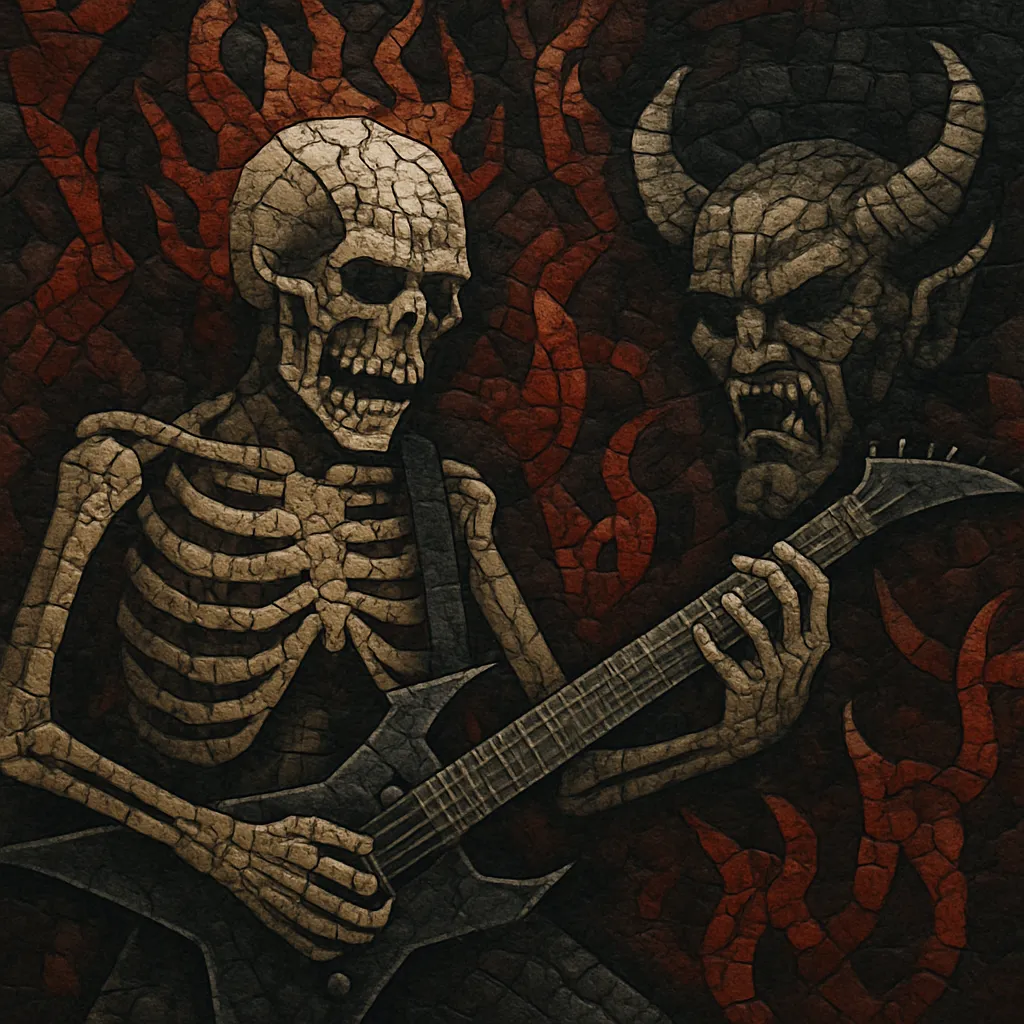Death metal is an extreme subgenre of heavy metal defined by heavily distorted, low‑tuned guitars, rapid and complex riffing, blast beat drumming, and harsh guttural vocals. Its harmonic language favors chromaticism, dissonance, and tremolo-picked lines that create an ominous, abrasive atmosphere.
Lyrically, death metal often explores dark or transgressive themes—mortality, mythology, anti-religion, psychological horror, and the macabre—sometimes with philosophical or social commentary. Production ranges from raw and cavernous to hyper-precise and technical, reflecting the genre’s many regional scenes and substyles.
From the mid‑1980s Florida scene (Tampa) and parallel developments in the US, UK, and Sweden, death metal evolved into numerous branches including brutal death metal, technical death metal, melodic death metal, and death‑doom, each emphasizing different aspects of speed, complexity, melody, or heaviness.
Death metal crystallized in the mid‑1980s from the most extreme edges of thrash metal and first‑wave black metal. Early pioneers such as Possessed (US) and Death (US) pushed faster tempos, harsher vocals, and darker harmonies than their thrash contemporaries. In Florida—particularly the Tampa area around Morrisound Recording—bands like Morbid Angel, Obituary, and Deicide codified the genre’s sonic hallmarks: down‑tuned guitars, blast beats, chromatic tremolo riffs, and guttural vocal delivery.
Across the Atlantic, the UK (Carcass, Bolt Thrower) and the Netherlands (Pestilence) contributed distinct flavors, while Sweden developed two influential schools. Stockholm’s Sunlight Studio sound (Entombed, Dismember) used a chainsaw‑like HM‑2 buzzsaw tone and d‑beat drive, whereas Gothenburg later birthed melodic death metal (At the Gates, In Flames, Dark Tranquillity) with harmonized leads and more accessible structures.
Meanwhile, New York and Long Island scenes (Suffocation, Immolation) emphasized rhythmic complexity, slam‑leaning breakdowns, and dissonant chord work, feeding the rise of brutal and technical strains. By the mid‑1990s, death metal had spread globally, spawning festivals, specialized labels, and a dense network of underground distribution.
Subgenres proliferated: technical death metal (Atheist, Cynic, later Necrophagist) fused jazz‑inflected harmony and virtuosic chops; brutal death metal (Cannibal Corpse, Suffocation) pushed extremity in speed and vocal depth; death‑doom slowed the style to a funereal crush; and death ’n’ roll melded swaggering rock rhythms with death metal tone. Cross‑pollination with hardcore yielded deathcore, while blackened death metal blended ritualistic atmosphere with ferocious riffing.
A wave of “old‑school death metal” (OSDM) revivalists embraced raw production, cavernous reverb, and murky riffcraft, while others continued the technical and progressive trajectory with extended-range instruments and polymetric drumming. Worldwide scenes—from South America to Eastern Europe and Asia—now sustain the genre, which remains a cornerstone of extreme music culture.


